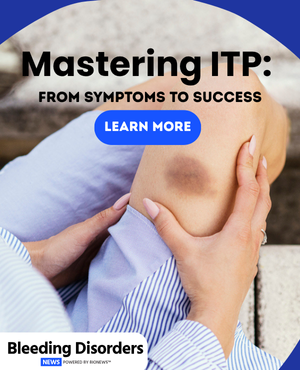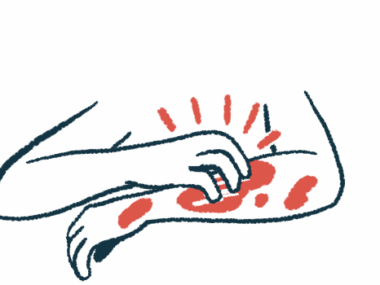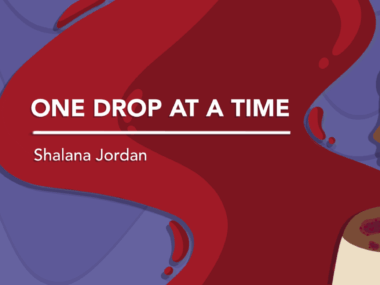New funding will launch trial of tAN for heavy menstrual bleeding
Spark to test neurostimulation device in women with VMD
Written by |

Spark Biomedical has been awarded funding from The Missed Vital Sign, Wellcome Leap’s $50 million program in women’s health, which it will use to launch a clinical trial testing transcutaneous auricular neurostimulation (tAN) to treat heavy menstrual bleeding in women with von Willebrand disease (VWD). The trial will also enroll adolescents with heavy menstrual bleeding due to unknown causes.
tAN is a noninvasive, nonpharmaceutical approach that, according to Spark, “engages the nervous system to … improve hemostasis (i.e. reduced bleeding), addressing a critical unmet need during menstruation.”
The upcoming trial will involve adults with co-occurring heavy menstrual bleeding and VWD, as well as adolescents with similar bleeding whose cause is not known. Spark’s goal is to “generate robust clinical data to support regulatory approval by the U.S. Food and Drug Administration,” per a company press release.
The developer noted that “early feasibility studies have demonstrated promising results, with users experiencing over 50% reductions in blood loss and 20% shorter menstrual periods following daily tAN therapy.”
Daniel Powell, Spark’s president and CEO, said the company is “truly honored to be selected by Wellcome Leap’s The Missed Vital Sign program.” Spark owns Ohmbody, a women’s wellness company that markets a wearable neurostimulation device designed to support menstrual health and comfort.
A dozen more awardees — all academic institutions — also received funding under The Missed Vital Sign program, per its webpage.
For Powell, “being the sole company within a prestigious group of academic institutions … highlights the promise of our innovative technology and our commitment to advancing women’s health.”
Funding awarded as part of $50M The Missed Vital Sign program
In VWD, the body cannot properly form blood clots, leading to prolonged and excessive bleeding. For women and girls, symptoms also frequently include menstrual periods with heavy flow that last longer than a few days. Treatment may involve birth control and antifibrinolytics, which prevent blood clots from breaking down.
However, according to Navid Khodaparast, PhD, Spark’s cofounder and chief science officer, “women’s health has long been understudied, and there is a large unmet need for new treatment options.”
Khodaparast, who will serve as the principal investigator for the new study, said the funding “enables us to move forward with a pivotal clinical trial of our neurostimulation device.”
Research has shown that delivering electrical impulses to certain nerves in the body — specifically, the vagus and trigeminal nerves — may help reduce bleeding by making blood-clotting platelets more responsive to molecules that signal the need to form blood clots. Both the vagus and trigeminal nerves play a key role in regulating bodily functions.
With Spark’s OhmBody, these impulses can be delivered through the skin around the outer ear using a patient-controlled device connected to an earpiece. As part of the clinical trial, women will use a device that delivers mild electrical impulses to branches of the vagus and trigeminal nerves via such a earpiece.
The device incorporates components of Sparrow Ascent, Spark’s neurostimulator cleared by the U.S. Food and Drug Administration (FDA) to reduce symptoms of opioid withdrawal.
Noting that OhmBody “offers a novel, noninvasive treatment for heavy menstrual bleeding,” Khodaparast said this trial “paves the way for FDA approval.”
Ongoing Spark trial testing neurostimulation device in 15 women
An ongoing clinical trial (NCT06814028) sponsored by Spark is now testing tAN in women with a history of heavy menstrual bleeding at a single site in Dallas. The study is recruiting as many as 15 women, ages 18 to 45.
Its goal is to test whether neurostimulation can reduce how much blood is lost during a menstrual period, and further, if the treatment improves quality of life and eases symptoms of menstrual bleeding.
The clinical trial, launched in February, is following participants over the course of three menstrual periods. During the first, no neurostimulation is delivered. During the second, the women use the wearable, battery-operated device in two one-hour sessions daily. For the third, the device is used in a single two-hour daily session.
Spark Biomedical has and is developing products, like OhmBody, [that use] wearable noninvasive neurostimulation designed to reduce blood loss during menstruation.
Women will track how much blood they lose during each menstrual period using the Pictorial Bleeding Assessment Chart, which estimates menstrual bleeding based on a selection of images of tampons, pads, and clots. They will also report on their quality of life and how severe their symptoms are — specifically, noting pain, nausea, and mood changes.
In a separate press release from Pathway to Cures, a venture philanthropy fund for the National Bleeding Disorders Foundation, Khodaparast noted that “Spark Biomedical has and is developing products, like OhmBody,” that use “wearable noninvasive neurostimulation designed to reduce blood loss during menstruation.”
A completed clinical trial (NCT06064851), also sponsored by Spark, has tested tAN in 29 patients with either VWD type 1 — the most common type of the disease — or who have no known cause for their heavy menstrual bleeding. The protocol design was similar otherwise. However, no results have been published yet.






